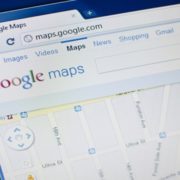Why Every Business Needs a Location Data Strategy
It doesn’t matter whether you are a digital native brand or operate out of a brick-and-mortar store, location data is crucial for all businesses. When over 200 C-level executives, managers, and analysts in the United States were recently quizzed about the importance of location data to their organization’s success, 78% said it was ‘very’ or ‘extremely important’ in today’s competitive landscape.
How Strategic Territory Design Leads to More Sales
Could your company be losing millions of dollars each year because of an imbalance in sales territories? Are you sure your sales force is not deploying too much effort against low-potential customers or doing too little to convert key prospects?
According to a study of 300 companies published in the Journal of Personal Selling and Sales Management, sales territory alignment is one of the most commonly overlooked areas of sales force productivity. And optimizing territory design can increase sales by 2 to 7% – without any additional resources or changes in the sales strategy.
Problems with poor territory design
If you really think about it, a major chunk of sales and marketing data is purely geographic in nature – the address of a prospect, postal code, city, phone number, demographics, etc. But, to draw up sales territories, sales operations managers have traditionally relied on Excel spreadsheets. And there is only so much you can accomplish by flipping through one time-consuming spreadsheet after another.
Sales managers often end up leaving millions of dollars on the table simply because they are not aware that their territories are out of balance. So, while one sales representative may be chasing bad leads and struggling to stay busy, another may be ignoring challenging but high-potential prospects because they are already crushing their targets through easy accounts.
Think about it: Is there any specific territory where you have had trouble retaining salespeople? Could this quick turnover be a result of an opportunity mismatch – that salespeople become discouraged because of the lack of opportunity in their area and leave the organization?
You may be able to spot a similar trend in your incentive pay scheme too. Irrespective of how capable or hard working a salesperson is, their capability of taking home a fair share of incentive pay is significantly impacted by the equitability of sales territory design.
So, if you are looking to foster a culture where you reward someone for their true performance, it may be time to rethink how you design and manage your territories.
Target sales strategically with data visualization
The easiest and most straightforward way to divide sales territories in a fair and balanced manner is to visualize them on a map. And no, using a map does not mean taking a print out of the map of Canada and highlighting areas with different colored markers. It means leveraging sophisticated technologies to build territories based on key metrics like revenue goals, market opportunities, custom client information, government areas, proximity to salespeople’s base location, etc.
Territory Builder is a data visualization tool which allows you to group FSA/LDU (3 or 6 digit) postal codes or municipalities together to create equitable sales territories easily. Built especially with non-technical people in mind, this Cloud-based visualization portal is powered by DMTI’s powerful Location Hub® Viewer module that automatically cleanses your data before displaying it on a map. With Territory Builder, visualizing and building territories on a Canadian map is as easy as uploading a CSV file of addresses or geographic information and using 3 or 6 digit postal codes to define boundaries.
And if your salespeople still think the territories are unfair, or launching a new product is shifting priorities, or you discover new sales opportunities in a region, you can easily manage and modify the boundaries. Since Territory Builder is a SaaS-based product, you can make live changes by reassigning postal codes to new territories.
Indeed, you cannot hope to optimally utilize your sales force and maximize profits unless you can picture the gap areas in your sales coverage clearly. DMTI’s Territory Builder is a powerful data visualization tool which will not only give you a more accurate view of your business, but it will also help you provide a fair challenge to your salespeople and drive home new revenue streams.
So, are you ready to increase the productivity and performance of your sales representatives? Get in touch here.
Additional Reading:
3 Location Tools Every Digital Marketer Should Be Using
Even the most skilled digital marketers tend to struggle in one key area: knowing what their customers are doing offline, and how to use those offline behaviours to develop effective marketing strategies. Offline behaviours are the marketing touchpoints that consumers don’t actually physically engage with, such as seeing an advertisement on TV or a sign in a window when walking past a store.
Location technology offers unique insights into the complex customer journey. Customers do not operate in silos, and marketing shouldn’t either. A buyer has multiple potential touchpoints, and effective marketing requires understanding online and offline behaviours in order to optimize strategies. Marketers using location tools are able to view data on how customers react to various forms of marketing based on their physical locations. By tracking certain customer behaviours, marketers gain the ability to offer stronger and more effective experiences for customers.
Whether customers are shopping online or in a brick-and-mortar store, here are the top 3 location intelligence tools digital marketers should be using to develop a strong end-to-end customer journey.
1. Geotargeting
What is Geotargeting?
Geotargeting is a location intelligence tool used to deliver the most relevant content to people based on their location.
Even the most skilled digital marketers tend to struggle in one key area: knowing what their customers are doing offline, and how to use those offline behaviours to develop effective marketing strategies. Offline behaviours are the marketing touchpoints that consumers don’t actually physically engage with, such as seeing an advertisement on TV or a sign in a window when walking past a store.
How to Use Geotargeting
Geotargeting is effective because it allows you to create marketing strategies that connect with customers on their terms. You get the big picture view of customer locations so that you can communicate in a way that is personal and meaningful. This includes mobile notifications, targeted digital ads, email and much more. Geotargeting allows you to get very specific about who you are marketing to, and how location could play into purchasing decisions. Using geotargeting over a period of time allows you to gather data on customer behaviours for a deeper contextual understanding of what sort of messaging is most effective.
2. Geofencing
What is Geofencing?
Marketers use GPS or radio frequency (RFID) to designate a virtual geographic boundary. The system is triggered in real time when customers enter or leave the ‘fence.’ This allows marketers to send alerts or notifications to encourage consumer engagement.
How to Use Geofencing
Geofencing allows you to engage with customers in powerful ways. When customers enter or leave the virtual fence, you can send very specific content to help them take a certain action. For example, you can set a fence for 2 miles from your store. If a customer enters the fence, they get an alert about a special deal or event happening at that moment. You can also set up a geofence around a competitor’s business, triggering a notification when your customers visit competitors with a compelling offer that could inspire them to visit you instead. Geofencing could also offer helpful insights by showing how often customers are in your fence, or whether they are inspired to visit your store when offered certain incentives.
3. Geofilters
What are Geofilters?
Geofilters are location-based screens that can be used on social media, and are only accessible when users are in a specific location.
How to Use Geofilters
Geofilters are a fun and unique way to connect with consumers. They are also a great way to have consumers promote your brand for you. You can create a filter consumers can use when they visit you. Alternately, you can allow users to personalize geofilters in your designated space and encourage them to share it on social media. You can even set up a geofilter in or near a competitor’s location to drive customer interest back to you.
Use Location Intelligence in Your Digital Marketing Strategies!
Geotargeting, geofencing, and geofilters are all powerful ways for digital marketers to better understand consumer behaviour. These tools offer location-based insights that help marketers refine messaging, and to develop streamlined customer experiences.
DMTI’s CanMap Address Data and Location Hub Visualization & Web Services deliver the tools can be used to support digital marketing strategies. DMTI is continually updating and cleansing data to deliver accurate and reliable location information. Marketing teams using DMTI’s unparalleled location data consistently outpace their competition. When using any location tools to market your product or service, DMTI offers the most complete and accurate Canadian data and software services.
Click here to contact a DMTI specialist, and get information on how you can leverage location intelligence to optimize digital marketing campaigns.
Additional Reading:
How retailers can use digital maps to improve customer experiences
By Robert Szyngiel, leader, product management, DMTI Spatial
Digital maps have become an indispensable part of our daily lives. According to a recent Alpha Beta study commissioned by Google, $1.2 trillion of sales worldwide can be tied to digital maps.
But while you may know how much easier maps have made your life, let’s take a look at three ways that retailers can use digital maps to improve customer experiences: Read More
Additional Reading:
4 Ways Advertisers use Location Intelligence to Identify Effective Ad Space
With all of the platforms available for advertising today, marketers have to find the most effective way to reach customers and craft messaging that is consistent but also aligns with the platform that message is being delivered on.
While mobile devices provide insights on how people behave online, location technology offers insights on what people do offline by showing their physical location, when they are digitally connected but not actively engaging in online activity. Aggregating online and offline behavior is incredibly powerful when developing advertising campaigns.
Here’s an overview of how location intelligence applies to various marketing channels:
Online/Social Media Ads:
This refers to digital and mobile ads on social media, search advertising, Adwords, etc. By adding designated locations to digital ads, you don’t waste money on clicks from customers outside of your specified location. Combined with geotargeting and geofencing, you can develop very specific ads based on consumer behaviour and intentions.
Print/TV/Radio/Podcasts:
While these four ad segments are quite different from each other, they are lumped together here because they all have very precise information about their audience that they will share with advertisers. However, location intelligence gives you an edge over other advertisers by helping you leverage offline behaviour to craft very specific messaging to your target audience.
Billboards:
Location intelligence platforms provide continually updated demographic data. Use demographic insights along with geotargeting to gather information about highly concentrated locations of your target market to determine the most effective placement of billboard advertising. DDGuerilla Advertising/Marketing: This is the most unconventional form of advertising, but can be the most impactful if done right. For example, if you’re a company that heavily targets women between the ages of 26-40, you can use your location intelligence platform to identify an urban area with a high percentage of female employees. Setting up a guerilla campaign for a couple hours during lunch time could be a hands-on way to get directly in front of your target audience.
Guerilla Advertising/Marketing:
This is the most unconventional form of advertising, but can be the most impactful if done right. For example, if you’re a company that heavily targets women between the ages of 26-40, you can use your location intelligence platform to identify an urban area with a high percentage of female employees. Setting up a guerilla campaign for a couple hours during lunch time could be a hands-on way to get directly in front of your target audience.
Omnichannel Marketing:
Putting it All Together With the location-based insights you’ve leveraged to determine effective ad space, you can also determine how to integrate your marketing initiatives to ensure all ad spaces support each other. For example, use social media and radio ads to draw attention to an upcoming guerilla marketing initiative. Or develop consistent messaging for print, TV/Radio and billboards to draw attention to a major new product offering for people in a specific area.
Everything is dependent on your business or company’s specific use case, but these examples show how you can leverage location intelligence to see where the most impactful ad placements are by allowing you to gather online and offline information about your target market. Location intelligence will help you determine which ad spaces will be more effective for you, and will provide information about how to craft consistent messaging for each channel.
Want to learn more? Read our Ultimate Guide to Using Location Based Insights for Omnichannel Marketing










